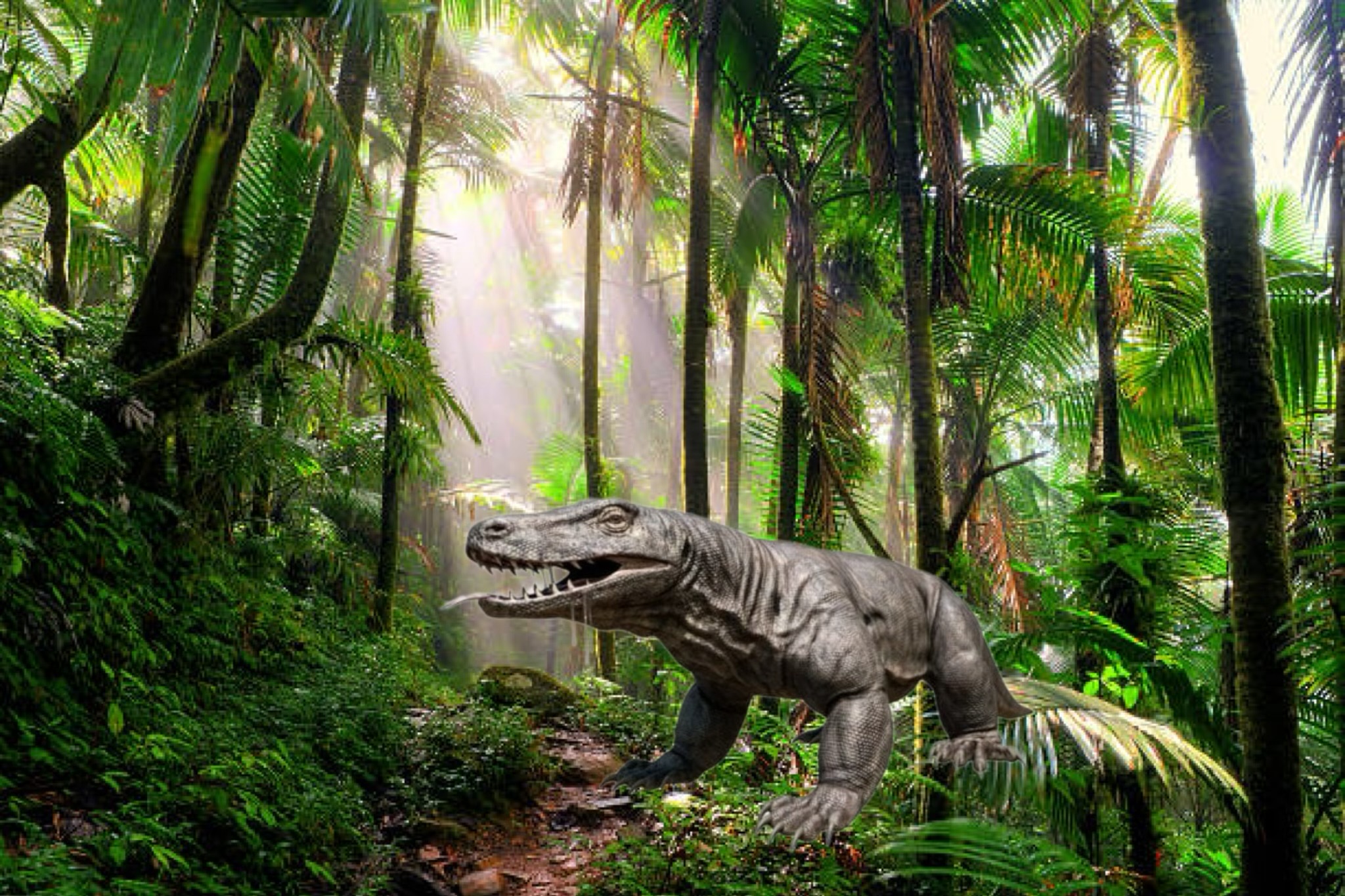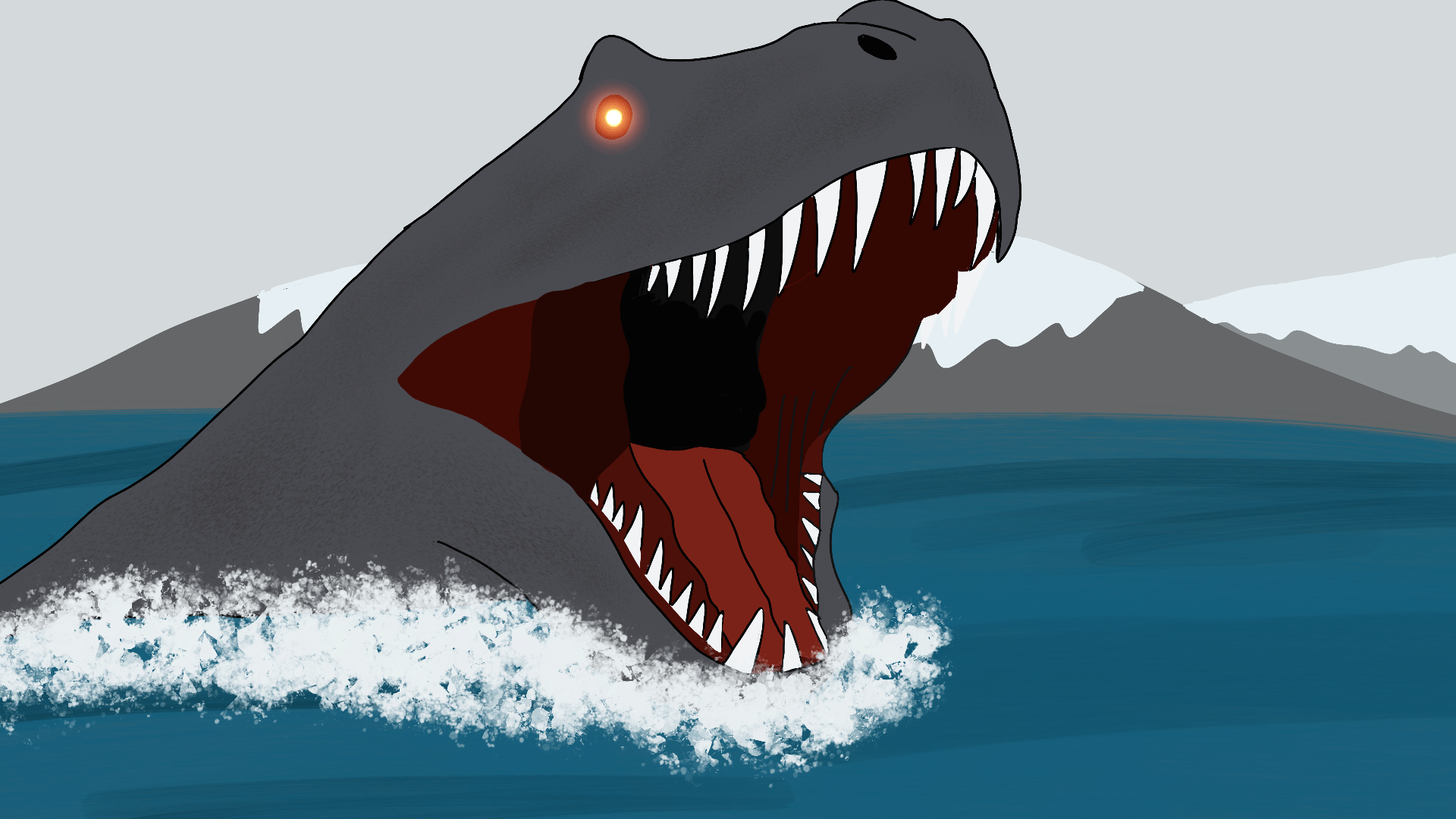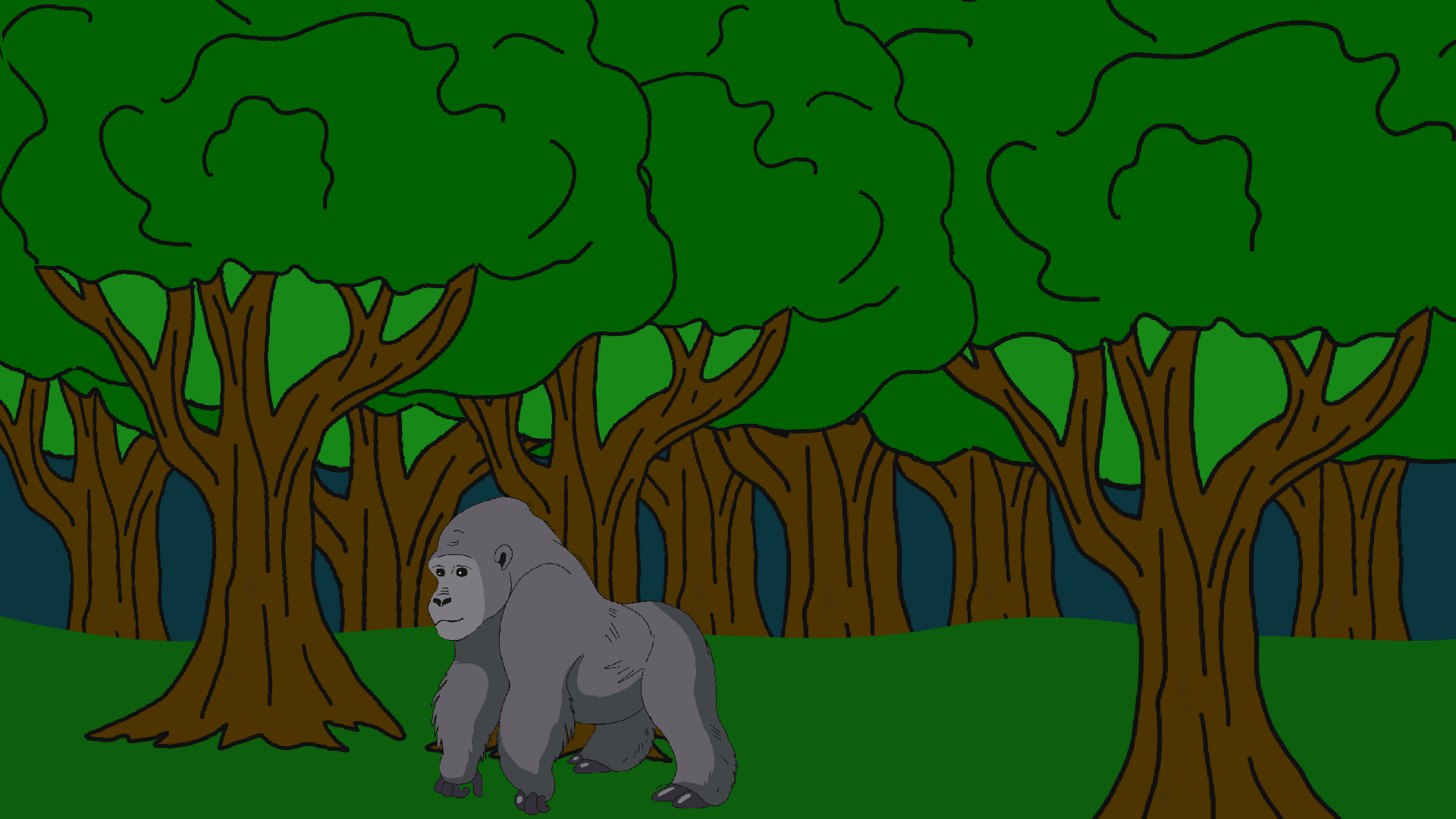In 1933, Richard Archbold, an American zoologist travelled to New Guinea to lead a scientific expedition into this strange land. The goal of these expeditions was to study the environment, map the area they had travelled and study the plant and animal life in these the jungles. During one of these expeditions, Archbold and his men were warned by locals, warned of giant man-eating dragons that could consume a man whole. It was said if they encountered one, they would never be seen again. The name given to this terrifying creature by the locals was Artrellia.
Papua New Guinea is Located within the Pacific Ocean north of Australia and known for being one of the least explored places on earth. The majority of the country is covered by dense tropical rainforest that are extremely difficult to navigate. Due to this, a large portion of the country is only accessible either by foot or by airplane. Many researchers feel this area almost rivals the Amazon, with a large number of undiscovered plants, animals, and uncontacted tribes which may still be hidden within the thick rainforests.
One of these creatures is thought to be the massive Artrellia. It is described by locals as being a nearly 30ft long with both crocodile and dragon like characteristics. It is said to have grey skin, and the lizard is rumored to be able to climb trees and breath fire. It is very territorial, like an anaconda, and devours anything unlucky enough to step in it. Locals reiterated it eats the entire body of its victim, even the bones.
Two credible sightings would occur in the 1960’s and the late 1970’s.
In 1978, a new expedition team landed in Papua New Guinea. Led by Colonel John Bashford Snell, Operation Drake was an international expedition that involved many young researchers between the ages of 17-24 from different countries.
While in Papa New Guinea, Col. Blashford-Snell became very interested in the stories and sightings about the Artrellia that the locals told him. The team interviewed many tribe members and soon went into the jungle to search for the creature. Since they had local hunters travelling with them, they killed a lizard almost 6ft long. Ecstatic at first, the team the soon realized they had killed Salvadori’s Monitor, which was a known species. It was still a baby and did not have any of the features of the Artrellia like gray skin not able to breath fire.
As the Drake Expedition was winding down, it seemed that Artrellia was merely just a myth. That was the thought between team members until one team member would have a terrifying encounter with the dragon. Ian Redmond, an English zoologist, was sitting on the ground resting with his legs in an old dry creek bed when he started to hear breaking twigs and what sounded like large footsteps. He was below ground level and thought the footsteps he heard were one of his team members as they sounded human like. Then, Redmon suddenly realized he was hearing four footsteps and not two. When he turned around, Redmond saw the giant head and shoulders of a large dragon staring at him.
He described the dragon-like lizard as having a head almost as large as a full-grown horse, and the shoulders were equal in size. Calmly, Redmond slowly started to reach for his camera, but as he did, the lizard turned away from the edge of the creek bed and disappeared into the jungle. Redmond quickly got out of the creek to get the others, but a search for the Artrellia yielded no results.
In the 1960’s another sighting of an Artrellia would occur, this time with two witnesses seeing it.
Titanoboa- The Amazon’s legendary 100 foot snake- read here
In 1961, explorers Robert Grant and David George were exploring the Strachan Island District when they spotted the Artrellia. The two men described the unknown lizard with gray skin, 26 feet in length and standing nearly 4ft tall, with a neck that appeared to be 3ft long. The men kept their distance for safety reasons and after some time the giant lizard disappeared back into the jungle.
More less famous sightings occurred as well throughout the 20th century.
One year prior in 1960, David Marsh, district commissioner of Port Mores made official statements regarding sightings of giant lizard-like “dragons” in the jungle when he was stationed as patrol officer in the 1940’s. Also, in 1960 local residents gave the Agricultural Administration a large unknown skin and jawbone of a creature that they could not be identified.
The Irish Crocodile- Dobhar-Chu
In WW2, allied troops took control of the island from the Japanese. There were numerous reports of troops seeing giant lizard-like creatures in the jungles. They were reported as being between 15-20ft in length and very agile. These sightings would continue for the entire time the troops were on the island.
Today many questions still circulate surrounding this cryptid. Is the Artrellia just a case of mistaken identity with locals seeing the Salvadori’s Monitor Lizard? Or is there a gigantic species of Lizard truly living in the isolated, dense jungles of Papua New Guinea? There’s been numerous credible sightings over decades and good reason to believe this cryptid could be real. Komodo dragons reach up to 12 feet so it’s certainly possible that a dragon 20-30 feet could exist. The creature also lives in one of the toughest environments on the planet and one extremely difficult to explore.
To date, we continue to get eyewitness reports of this large dragon like creature, but the fact remains, it’s extremely difficult to explore these rainforests, so finding an answer to this question might just have to wait.





Улучшаем эффективность строительства с помощью винтовых свай: преимущества для застройщиков
винтовые сваи под фундамент https://www.vintoviye-svai.ru .
Бухгалтерские услуги: ваш путь к безупречной финансовой отчетности
москва бухгалтерские услуги https://buhgalterskie-uslugi-495.ru .
Дипломы с гарантией качества: Закажите прямо сейчас
купить диплом о высшем образовании https://kupit-diplom01.ru .
Пансионаты для пожилых с реабилитационными программами: выбор после госпитализации
пансионат для проживания пожилых людей https://www.pansionaty-dlya-pozhilyh1.ru .
Почему тайская косметика идеальна для спа-процедур дома
косметика из тайланда купить в москве https://www.tajscaya-kosmetika.ru .
Как купить диплом: ваш путеводитель по выбору
покупка диплом http://diplomy-dypit24.ru/ .
Стоматология рядом с вами: Индивидуальный подход к каждому
удалить зуб рядом со мной https://www.stomatologija-juao-495.com/ .
Boost Your Confidence with Safe and Effective Dermal Fillers
lip filler at home kit https://www.fillers-biorevitalizants1.com/ .
Быстрая и качественная уборка в Москве – Надежные клининговые услуги
Клининговая служба https://www.uborkaklining1.ru .
Профессиональная уборка в Москве: заказать генеральную уборку
генеральная уборка в квартире https://www.genuborka11.ru .
Магазин запчастей для КАМАЗ: официальные дилеры и оригинальные детали
запчасти камаз купить http://www.zapchasty-kamaz01.ru .
Клининговая компания: прайс-лист на услуги уборки дома
цены на клининговые услуги в санкт петербурге uborka-chistota.ru .
Обзор клининговых фирм: какие предлагают лучший сервис
Рейтинг клининговых компаний http://www.uborka22.ru/ .
Сравни цены и качество услуг на нашем портале
Сравнение компаний москвы http://www.remontuborka.ru .
How to Check CPU Temperature in Windows 11 with Command Prompt
how to check cpu temp windows 11 http://check-cpu-temperature-windows-11.com/ .
Учебный центр ДПО: Подготовка кадров для индустрии красоты
курсы косметолога с мед образованием https://www.cosmast23.ru .
Реабилитация наркозависимых в Севастополе: Услуги и цены на лечение
наркологическая клиника севастополь https://www.xn—-1-5cdblfrzslgqqbgarh1adw8u7b.xn--p1ai .
Доставка алкоголя на дом круглосуточно – выберите и закажите легко
заказать алкоголь с доставкой москва http://dostavka-alkogolya-moskva-kruglosutochno-2.ru/ .
Сравнение услуг интернет-провайдеров: почему Уфанет выигрывает
тарифы уфанет орск https://www.ufanet-ufa347.ru/orsk .
Частные пансионаты в Москве: уютное место для проживания пожилых людей
пансионаты для пожилых в москве http://www.pansionaty-dlya-pozhilyh77.ru/ .
Рабочие зеркала казино Клубника: доступ к играм 24/7
Clubnika рабочее зеркало на сегодня https://www.casinoclubnika-official.ru .
Как выбрать дом престарелых с хорошими отзывами
дома для престарелых doma-prestarelyh77.ru .
Где купить Kugoo M4 Pro в 2024 году — гид по лучшим предложениям
куго м4 про 18ah https://www.kugo-m4-pro.ru .
Уфанет предлагает кабельное ТВ: большой выбор каналов
услуги уфанет https://www.ufanet-ufa347.ru .
Вокальная студия при школе вокала: Освойте постановку голоса и улучшите свои навыки
уроки вокала с нуля https://www.uroki-vocala-msk.ru .
Школа вокала: Профессиональные курсы и индивидуальные занятия
школа вокала для взрослых http://www.top1-shkola-vocala.ru .
Самые популярные модели бытовок для строительства и дачи
бытовки купить москва https://bytovki-moskva1.ru .
Как выбрать лучший пансионат для пожилых людей: руководство для семей
пансионат для проживания пожилых https://pansionaty-dlya-pozhilyh77.ru/ .
Дубликаты гос номеров: заказать онлайн
дубликаты номеров http://www.vip-dublikat-nomerov.ru .
Отдых в Гаграх: Пляжи, солнце и море ждут вас
гагра снять жилье otdyh-v-gagrah.ru .
Установка сантехники цена за работу: гид по выбору услуг
цены за установку сантехники santehnik-spb-cena.ru .
Казино Чемпион 2024: Лучшие игры, бонусы и акции для игроков
зеркало казино Чемпион зеркало казино Чемпион .
Наркологическая клиника Самары: Комплексное лечение зависимостей
платная наркоклиника narkolog-klinika-samara-1.ru .
Советы по выводу из запоя от людей, победивших зависимость
Вывод из запоя Алматы http://vivodizzapoya.kz/ .
Svai-Peresvet: сравнение винтовых свай с другими видами фундаментов
Svai-Peresvet: винтовые сваи цена
Ремонт иномарок всех марок и моделей – Быстро и качественно
ремонт иномарок в спб ремонт иномарок в спб .
Продажа двигателей Cummins 6 ISBe: Лучшие предложения на рынке
двс 6 isbe http://cummins-6isbe-1.ru/ .
Доставка грузов из Китая в Казахстан: надежно и быстро
грузоперевозки китай казахстан http://www.perevozki-kitai-kazahstan.ru/ .
Коммерческий транспорт в лизинг: удобное решение для роста бизнеса
коммерческие автомобили лизинг https://www.kommercheskij-transport-v-lizing0.ru .
Займ без отказа круглосуточно: деньги на карту в любое время суток
срочный кредит на карту без отказа http://www.dengikz.online/ .
Ортопедический детский матрас: как выбрать и где купить
матрас 120 на 60 детский купить https://www.detskij-matras-moskva.ru/ .
Доставка алкоголя: лучшие вина, пиво и крепкие напитки с доставкой
доставка алкоголя москва dostavka-alkogolya-moskva-world-1.ru .
Купить Cummins M11: оригинальные двигатели с гарантией производителя
двигатель каменс 11 купить двигатель каменс 11 купить .
Проекты каркасных домов под ключ: цена, сроки и этапы строительства
каркасные дома санкт петербург https://karkasnye-doma-spb1.ru .
Продажа бытовок по выгодным ценам: широкий выбор и быстрая доставка
купить бытовку для проживания https://bytovki-moskva0.ru/bytovki-dlya-prozhivaniya/ .
Беспружинные матрасы для всей семьи: качество и надежность
матрасы без пружин ортопедические bespruzhinnye-matrasy-kupit.ru .
Kugoo V3 Pro: электровелосипед для тех, кто ценит скорость и надёжность
kugoo v3 pro http://www.kugoo-v3-pro.ru/ .
Уютные пансионаты для пожилых: комфорт и забота о каждом
пансионат для престарелых лежачих больных https://www.pansionaty-dlya-pozhilyh3.ru/pansionaty-dlya-lezhachih-bolnyh/ .
Сдать спермограмму в СПб: быстрые результаты и помощь специалистов по планированию семьи
спермограмму с мар тестом в спб сдать спермограмму с мар тестом в спб сдать .
Центр репродуктологии в СПб: помогаем стать родителями с помощью новейших репродуктивных технологий
клиника эко https://reproductologyonline.ru .
Запчасти ВАЗ: высокое качество и выгодные цены на все детали для вашего автомобиля
лада деталь официальный сайт https://zapchasti-vaz01.ru/ .
Как выбрать каркасный дом под ключ: Гид по проектам и строительству
каркасные дома 1 этажные https://www.karkasnye-doma-pod-klyuch-msk1.ru/odnoetazhnye/ .
Top Features to Look for in an Online Stamp Maker
stamp creator online https://stamp-online-maker.com .
It’s really a cool and helpful piece of info. I’m glad that you shared this helpful information with us. Please stay us up to date like this. Thank you for sharing.
Каркасный дом под ключ: уютный дом для всей семьи за короткие сроки
каркасный дом под ключ в спб https://www.spb-karkasnye-doma1.ru .
Современные каркасные дома для тех, кто хочет создать уютное пространство
каркасный дом цена https://karkasnyi-dom-pod-klyuch-1.ru .
Купить экран для проектора онлайн: быстро, удобно и выгодно
проекционные экраны http://www.ehkrany-dlya-proektorov0.ru/ .
Ипотека на жильё в Бишкеке: что нужно знать перед подачей заявки
ипотека 2024 условия ipotekakg.ru .
Септики для частных домов: надёжные решения с профессиональной установкой
септик цена http://www.septik-pod-kluch-moskwa.ru .
Вывод из запоя в Самаре: круглосуточное восстановление здоровья под наблюдением
вывод из запоя самара http://vivod-iz-zapoya-63.ru/ .
Stamp Maker Online: Perfect Stamps for Home, Office, and Events
stamp maker http://stampingandblogging.com/ .
Оформление пропусков на МКАД: профессиональный подход и помощь
пропуск на мкад для грузовиков http://propusknamkad111.ru/ .
Современные методы ремонта и установки сантехники для вашего дома
сантехник https://www.vyzov-santeh-nik-spb.ru/ .
Фольга алюминиевая для пищевой и промышленной упаковки
фольга алюминиевая пищевая http://www.ufalaki.ru/ .
Услуги сантехника: профессиональный монтаж систем отопления
сантехник спб http://vyzov-santehnika-spb-52.ru/ .
Септики под ключ: современное решение для автономной канализации
септик установка под ключ http://www.septik-pod-klych-99.ru .
Вывод из запоя в Самаре: круглосуточная помощь с гарантией безопасности
вывод из запоя в самаре цена http://vivod-iz-zapoya-63.ru/ .
Септики для дачи и частных домов: современные решения под ключ
септик купить москва http://www.septik-pod-kluch-moskwa.ru .
Custom Rubber Stamps Online: Fast and Convenient Solutions
stamps maker http://www.stampwebshop.com/ .
Круглосуточный вызов сантехника: устранение аварий и плановые работы
сантехник на дом спб [url=http://www.vyzov-santeh-nik-spb.ru]http://www.vyzov-santeh-nik-spb.ru[/url] .
Установка септика под ключ: профессионализм и индивидуальный подход
септик под ключ цена https://septic-pod-kluch-msk.ru/ .
Прыжки с парашютом: шаг к свободе и новым эмоциям
прыжок с парашютом питер http://pryzhki-s-parashyutom-v-spb.ru/ .
Качественная замена старой сантехники: услуги опытного мастера
вызов сантехника спб http://www.vyzov-santehnika-spb-52.ru/ .
Печать на алюминиевой фольге и кашированной: персонализируйте упаковку
кашированные алюминиевой фольгой http://www.ufalaki.ru .
Интернет-магазин шин: покупка резины онлайн с минимальными усилиями
магазин шин и дисков магазин шин и дисков .
Магазин шин: купить шины для дальних поездок и городских условий
купить недорогие шины https://www.kupit-shiny-spb.ru .
Интернет-магазин автозапчастей ВАЗ: низкие цены и удобный сервис
запчасти для лады http://avtozapchasti-vaz1.ru/ .
Каркасный дом для небольшой семьи: уютное жилье по доступной цене
каркасный дом под ключ в спб цена https://www.karkasnye-doma-v-spb-pod-kluch.ru/ .
Септик под ключ: решение для вашего комфорта и удобства
септик с установкой цена https://www.septic-pod-kluch-msk.ru .
Деревянные дома под ключ для дачи: экологичность и долговечность
деревянный дом под ключ цена https://derevyannye-doma-pod-klyuch777.ru/ .
Прыжки с парашютом: идеальный вариант активного отдыха
прыжок с парашютом ленинградская область http://www.pryzhki-s-parashyutom-v-spb.ru .
Грузовые машины в лизинг: надёжное финансирование для транспортных компаний
лизинг грузовых автомобилей https://gruzovye-avtomobili-v-lizing1.ru/ .
Проектирование коммерческой недвижимости: доступная стоимость услуг
проектирование стоимость работ proektnye-raboty-ceny1.ru .
Подарите себе свободу: прыжки с парашютом в аэроклубе
прыжок с парашютом санкт петербург http://pryzhki-s-parashyutom-v-spb.ru/ .
Лизинг грузового транспорта с доставкой авто в минимальные сроки
лизинг грузовиков http://www.lizing-gruzovyh-avto.ru .
Эффективное лечение алкоголизма в наркологической клинике
наркология в спб narkologicheskaya-klinika-spb-0.ru .
Строительство деревянных домов под ключ: быстро, надёжно, доступно
заказать деревянный дом http://www.derevyannye-doma-pod-klyuch777.ru .
Доступный каркасный дом: экономичное и качественное строительство
каркасные дома в спб karkasnye-doma-v-spb-pod-kluch.ru .
Универсальные камеры заднего вида для грузовиков: простая установка и надёжность
камера заднего вида для грузовых автомобилей https://kamera-dlya-gruzovika.ru .
Интернет-магазин шин: надежные и долговечные модели для вашего авто
шины магазин shiny-internet-magazin.ru .
Где оформить кредит на карту онлайн? Топ банковских предложений
кредит кр кредит кр .
Купить спецтехнику у производителя: надежные машины для вашей работы
продажа грузовой спецтехники https://proizvodstvo-spectekhniki.ru .
Экран для проектора с антивандальным покрытием: надёжность в деталях
экран для проектора цена https://proekcionnye-ehkrany.ru/ .
Быстро подключить интернет в офисе: решение для бизнеса в короткие сроки
подключить интернет в офисе http://internet-v-ofis1.ru .